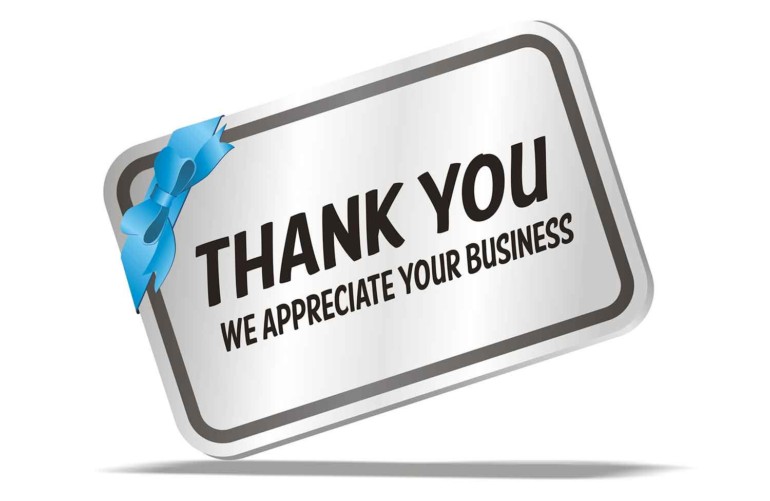Ask Andi: We’re a small company competing for market share. However, most high-end clients want to use a larger company. How to get around that concern?
Thoughts of the Day: Market share is a key indicator of a company’s competitiveness. Be sure you’re marketing to the right clients. Build an identity that matches what your clients want to buy. And be sure you can live up to that. Look for marketing tools that appeal to target customers.
Competing for market share
There are many reasons why a company might want to buy from a large company. Those reasons might include a perception of financial depth, R&D ability, continuity as staff turns over, Board and other shared relationships, reciprocity purchasing (I’ll buy from you, you buy from me), ability to buy multiple products from one source. The list goes on, these are just a few of the reasons I’ve heard cited.
The reality is, that most of these can be overcome by a small company. Build up reserves so that your company can afford the kind of float a large corporate or government buyer might demand. Know how much R&D your company can afford to invest in. Consider aligning with larger organizations that can supplement R&D and provide other forms of intelligence without being a competitor. As a small business owner, you have the ultimate in continuity. You are much more accessible than the CEO of a major competitor, the buck still stops on your desk, and you aren’t likely to take off or get fired since you’re the owner.
When it comes to Board and other relationships, think about whether you want to invest the time and energy on this one. If you decide it’s worth pursuing, layout a plan to get there, identifying the players you need to know. For starters, social media platforms and annual reports can give you insight on who to know and how to get to them.
As for reciprocity, you’ll not be able to compete with most large volume buyers. Instead, pitch your company as knowledgeable about its clients. Provide added value by helping customers solve problems. Make that added value worth more than any discount a client might get for bundling purchases with another vendor.
Win market share and dominate an industry
Find out what your large corporate buyers are trying to accomplish. What are they doing to move their companies forward? Find out what would be most valuable or useful, to help them reach their goals. Then work backward. How can you put your company’s assets to bear to help your clients? Figure out what can be done to leverage your company’s knowledge, connections, ability to gather information, etc. on behalf of your clients. Make your company indispensable to your clients and no one will care what size your company is.
Don’t forget about being nimble. No matter how powerful a major competitor may be, they are big, have more bureaucracy, and take longer to make and act on decisions. Use that to your advantage. Your company can commit faster, escalate things to the top, and get decisions made at a pace no large competitor can match.
When it comes to building organizational relationships, think about who you call upon. What’s their motivation for meeting with someone from your company? How do you get your to message through to the people you want to meet with? Maybe you need to send out information packages ahead of meetings, to inform participants of what your company brings to the table that will help them.
Follow up professionally. Courteous notes and emails, spell-checked, grammar-checked, to the point, summarizing each encounter, can go a long way to enhancing the perception of your company’s ability to perform.
Have is a loyal customer base
Spend money to get a presentation in top-notch shape. You may invest a year or more in getting just the right meeting. Don’t blow it by looking like you’re playing in the bush leagues. Learn how to use presentation tools on a laptop or tablet. Have handouts that are 4 colors. Save on handout printing costs by putting 6 slides on a page.
Practice your presentation until you know it is cold. Think through every possible answer. Have someone drill you in practice until you can look cool under pressure.
Keep in mind that people still do business with people they know and like. Profile your clients and prospects. Are you talking to decision-makers or decision influencers? Use your CRM (Customer Relationship Management) system to document all the people you want to connect with, and to keep track of progress.
Do prospects personally know anyone from your company? Get known throughout your clients’ organizations and industries. Join industry associations and panels where you’ll gain access to otherwise hard-to-reach individuals.
Looking for a good book?
Managing Customer Relationships: A Strategic Framework, by Don Peppers and Martha Rogers.
Andi Gray is president of Strategy Leaders Inc., strategyleaders.com, a business consulting firm that specializes in helping small to mid-size, privately-held businesses achieve doubled revenues and tripled profits in repetitive growth cycles. Interested in learning how Strategy Leaders can help your business? Call now for a free consultation and diagnostic process: 877-238-3535.





